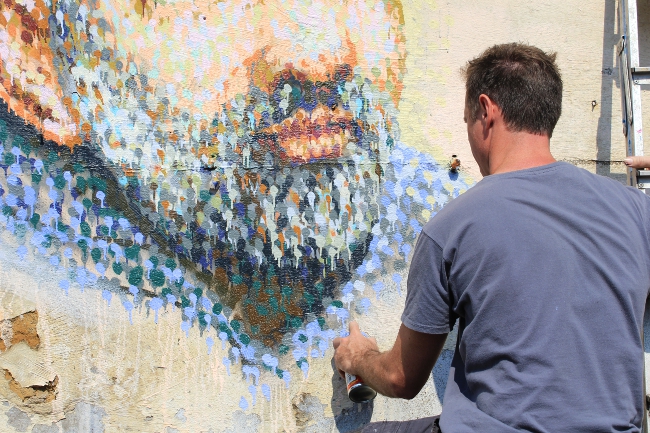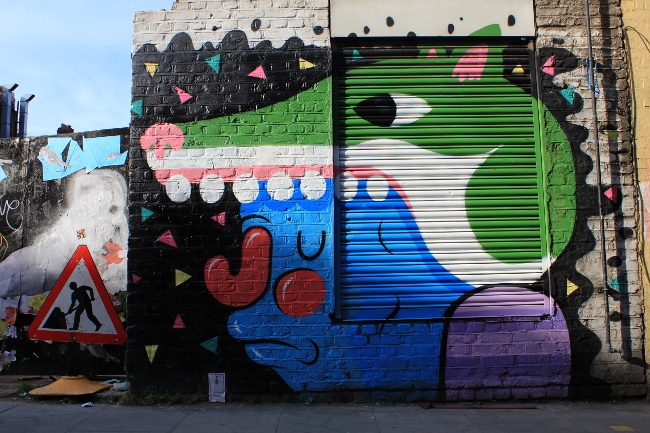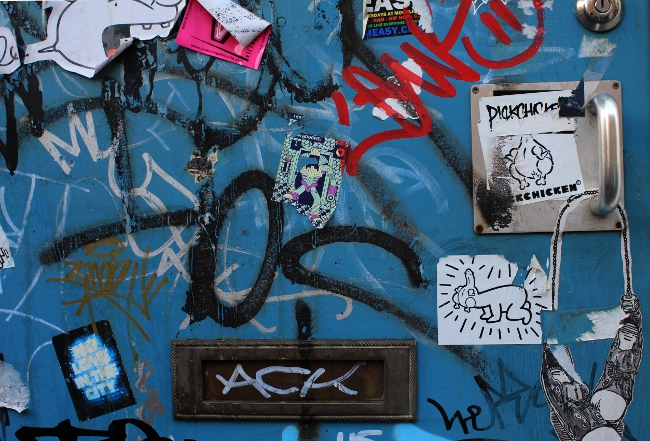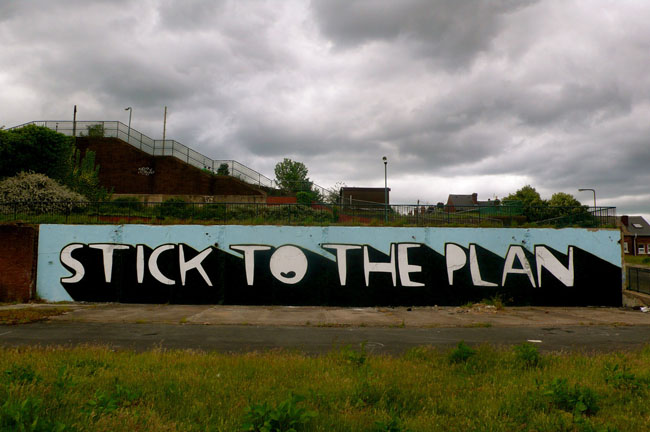
Sheffield 2009
Kid Acne’s art can be seen on walls all over the globe. The Sheffield-based artist is best known for his comic-like illustrations and larger-than-life slogans. He recently completed his biggest London mural and Street Art London had the chance to sit down with this one-man-army to pick his brains.
(All images save London 2013 are Kid Acne’s)
Why did you choose the phrase “OH MY DAYS” for the Village Underground mural?
I’ve been painting phrases for a while now. I probably did the first one around 2007 / 2008. I made hip-hop music for a number of years and when I was in a phase of making a lot of music I wasn’t really painting that much. I would write lyrics and ideas for songs in the back of my sketchbook and after a while I noticed I was writing more words in my book than I was drawing pictures in it. I thought I should really use them for something, so I started painting these slogans.
They’re just every day phrases that people say. I think it is nice to paint things that people can relate to, plus it has a lot of impact. Initially, it was almost as though the buildings were having a conversation. I painted one on my old art college before it got knocked down that said “You’ll Miss Me When I’m Gone”. I’ve always had it in my head that if I did a slogan in London it would say “Oh My Days”. People don’t really say that up north, so for me it’s a typical London phrase. I like painting big, bold stuff. It’s a good excuse to paint letters without having to write my own name over and over again.
Read more
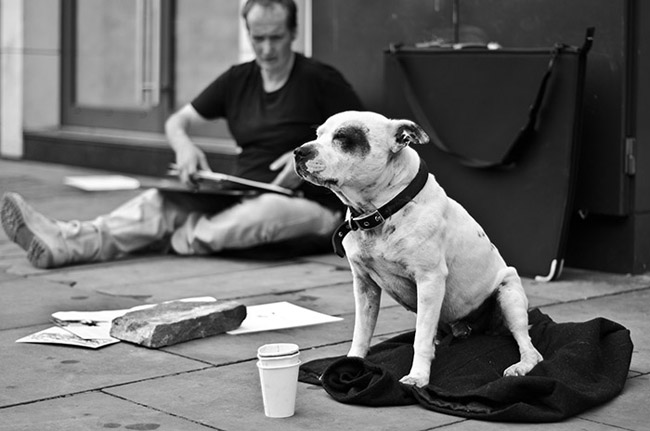

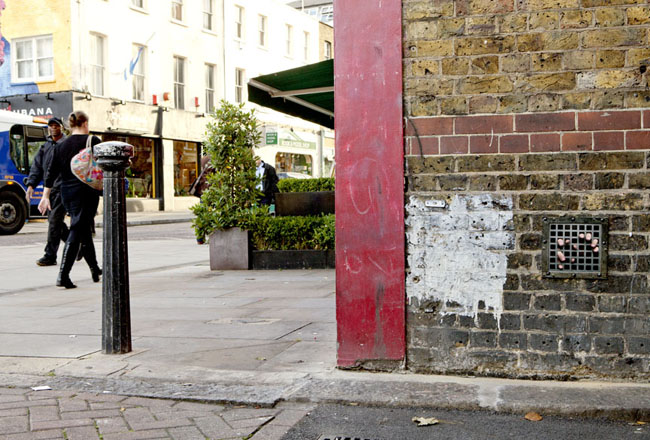
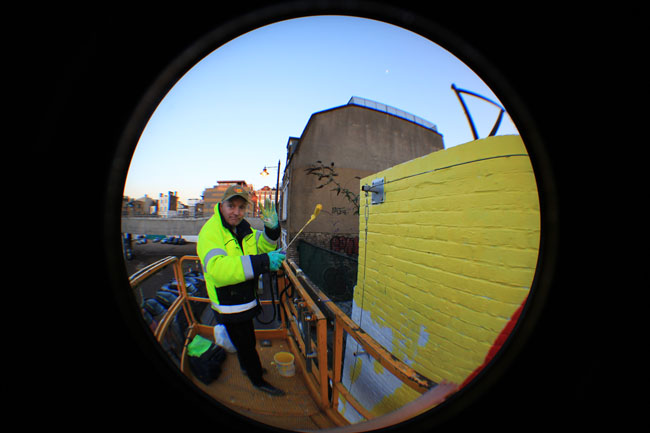


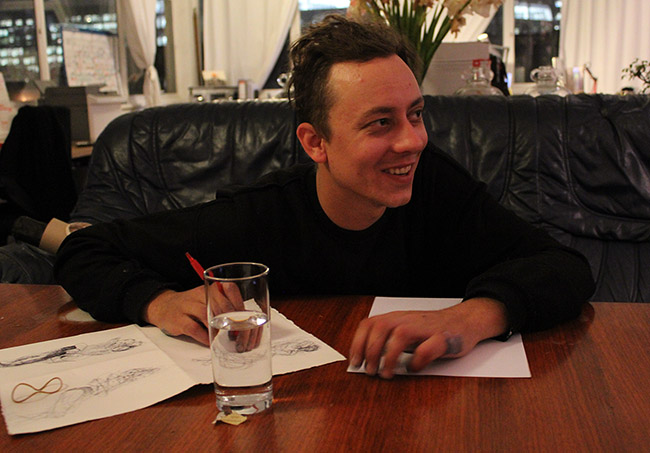
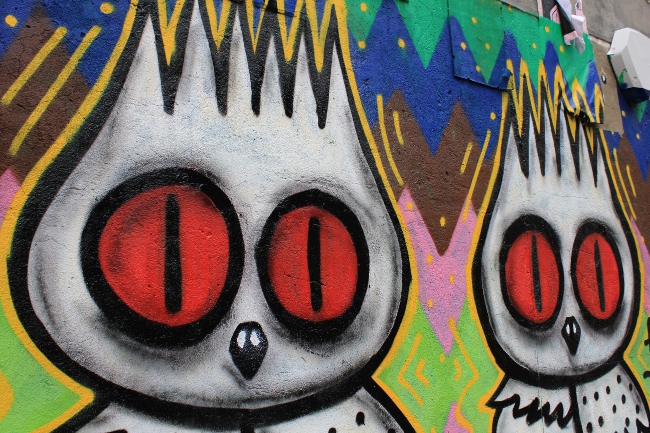
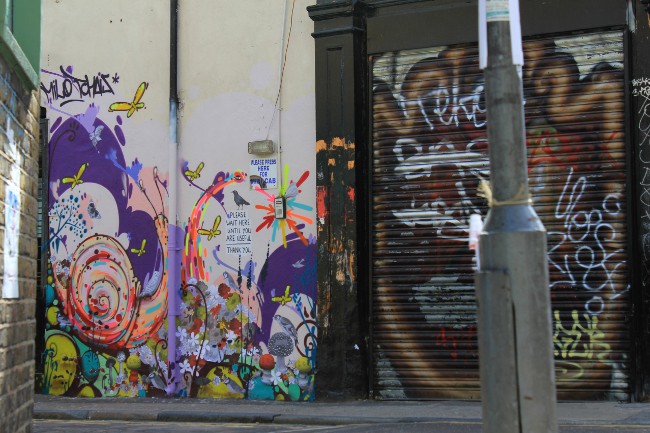
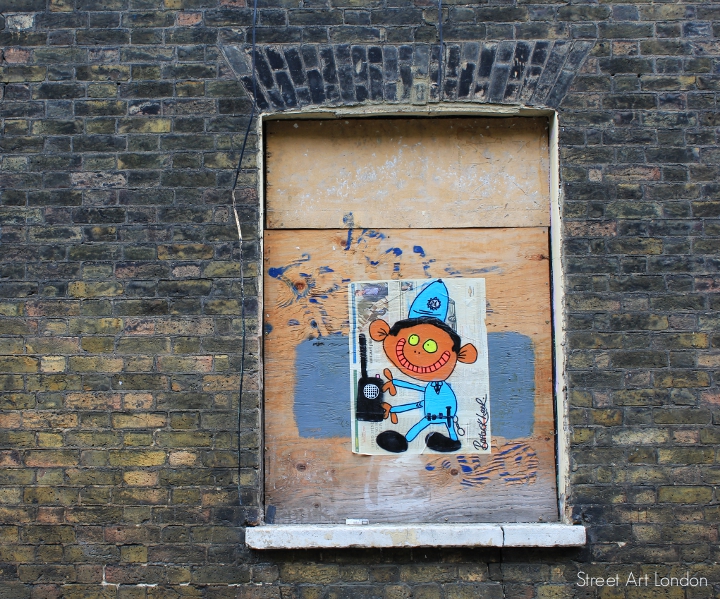 What inspired you to first paste neon monsters all over the streets of East London?
What inspired you to first paste neon monsters all over the streets of East London?